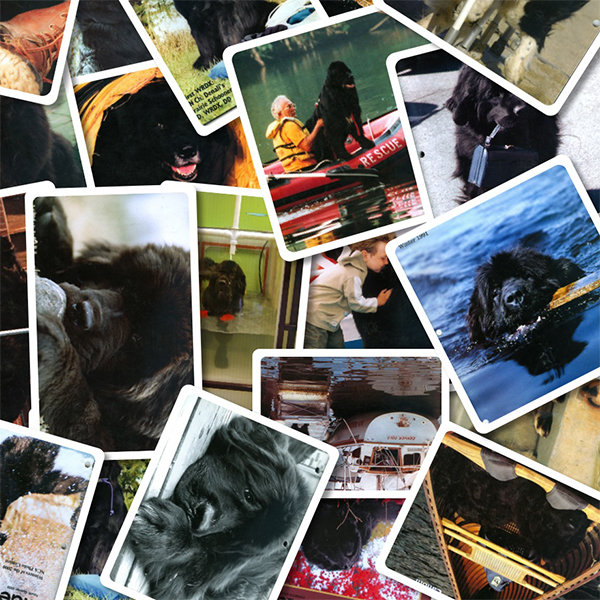
Guest columnist Anne Beck, a member of the Newfoundland Club of America's publicity committee, has owned both OFA-cleared and dysplastic Newfoundlands. One of her supposedly dysplastic Newfs earned a UD and never limped a day in her life.This article is a continuation of the July 2001 column.
The second story I want to tell you is about an 8-month old Newf puppy whose vet noticed rear lameness and suggests taking a look for panosteitis. The diagnosis: The dog had severe hip dysplasia – radiographically severe. There was a shallow acetabulum on one side, and none on the other. In this case, the deformation was bad enough that the “usual” surgical procedure, triple pelvic osteotomy (TPO) could not be performed because there wasn’t enough bone. The suggestion was to wait and see if there would be enough bone to do a total hip replacement when the dog was grown. The prognosis is grim, and the vet said the dog would probably have to be put down in a few months.
The dog was taken to an orthopedic surgeon three months later because there were symptoms of pain, such as refusal to move, whining and restlessness. Diagnosis is the same: TPO can’t be done, so the owners would have to wait and see about total hip replacement. Suggested palliative measures were glucosamines, buffered aspirin when the pain is evident and mild exercise for muscle strengthening. More X-rays were to be taken in two months.
During that two-month period the dog got better. He can run, jumps on the bed and has stopped crying. The dog is X-rayed again, and this time the orthopedist reported that the head of the femur is completely out of the shallow joint and, instead, held in place only by ligaments. The dog is no longer in pain because there is no longer bone rubbing on bone. When asked if the dog is a candidate for total hip replacement, the vet said that yes, it could be done, but why should it be? “Nature fixed the problem, at least for the moment, and maybe for the rest of the dog’s life,” the vet said. “If the clinical picture changes, we can talk about it.” He went on to outline the medical alternatives that should be used before any surgical procedure is performed. “First there’s keeping the weight down and exercising sensibly. Swimming is great. You have to remember that it’s only muscle and ligaments holding that leg in place, so strengthening the muscle is imperative.” This is the kind of veterinarian we should all hope to have!
Keeping that “clinical picture” in perspective and understanding that there are alternatives to surgery is the responsibility of any caring owner.
Before rushing any dog into surgery, first consider glucosamine and chondroitin supplements, exercise, weight control, and occasional aspirin. If your dog has radiological evidence of degenerative joint disease – without symptoms – it is often enough to supplement with glucosamines and control weight. Surgery might be necessary, but it should be for the dogs who are in terrible pain, can no longer walk, and whose owners are prepared to undergo the long rehabilitation necessary for recovery. It is not something to be entered into lightly, and it is not a sign of negligence to explore medical treatments before opting for what should be a last resort.

